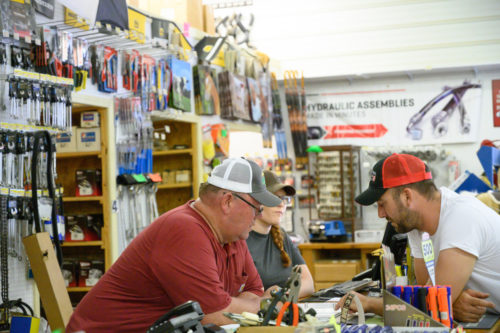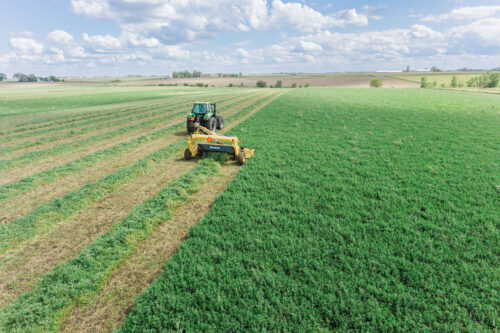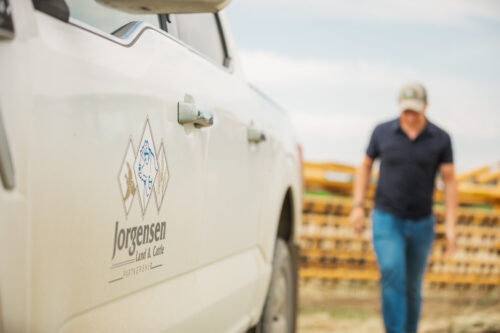
Cloudy with a Chance of Baleage
June 2018
Changing weather conditions are always a source of stress for farmers and ranchers. As many of you know, this is particularly true in hay making, where you need several consecutive days of warm, dry weather to mow, ted, rake and bale. Admittedly, waiting for that perfect stretch of weather comes with great risk and often results in missing the chance to maximize forage quality.
So, what’s the alternative?
Vermeer teamed up with University of Wisconsin-Madison Extension Forage Agronomist Dr. Dan Undersander to explore the benefits of using baleage in livestock operations.
What is Baleage?
Creating baleage is the process of cutting and baling high moisture forage, followed by wrapping it in airtight plastic film. It’s become increasingly popular across the Midwest and Northeastern parts of the United States, where producers can expect shorter periods of time between rainfalls. Baleage has been popular in the dairy market for some time, while the beef industry has recently started to explore its advantages as well.
When to Make Baleage?
The process of making baleage comes with greater flexibility than putting up dry hay. For starters, it can happen as fast as one or two days after mowing and can be made anywhere from about 25 to 70 percent moisture. This means you can mow hay when it’s at its highest quality rather than waiting for the right window.
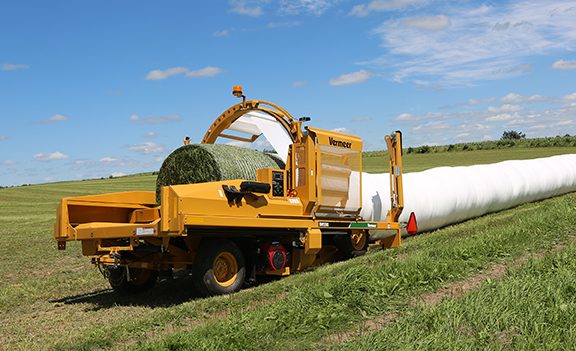
“You can quickly get into the field, put up that hay a little on the wet side and wrap it in plastic,” Undersander said.
Wrapping the bale in plastic film is where timing comes into play. In order to maximize the benefits of baleage, Undersander recommends that high moisture bales be wrapped less than 24 hours after baling in order to reduce heating and begin the fermentation process. Maintaining a lower internal temperature helps prevent aerobic deterioration, or changes in the chemical composition of the baleage that result in loss of dry matter and nutritional components.
To be sure, Undersander’s studies show that when wrapped immediately, the bale temperature only increased 10 to 15 degrees. Conversely, waiting 24-48 hours caused the hay to rise 50 to 60 degrees in temperature and stay there for close to a week. A hot bale is a great place for oxygen and microbes to propagate, with the latter feeding on sugars and decreasing the quality of the baleage. Thus, the quicker the bale is wrapped, the sooner it can use up any trapped oxygen, which reduces heating and ultimately helps protect the quality of the baleage.
Benefits to Baleage
Undersander outlines six advantages to adding baleage to your operation.
Weather, no worries: Baleage allows you to cut hay when it’s at its highest quality, rather than having to wait for a stretch of multiple days of dry weather. And when the hay is down, you do not have to worry about it getting rained on and thus losing its quality.
Looking ahead: The first cutting is important, but for most producers so is the second and even third. Fewer weather delays means you can save a large percentage of the next cutting’s yield. Each day spent waiting to bale your mowed crop negatively impacts the yield of the next cutting.
"Baleage gives you a convenient, stress-free way to provide quality feedstuff to your animals. Not only are you saving yield but also maximizing your acres to put up quality hay at the right time."
“Every day after mowing that we drive over the field, we lose 6 percent off of the next cutting,” Undersander said. “For example, if we get our haylage off the field in two days, we can expect up to 10 to 12 percent yield reduction. If it takes 5 days to get the hay off the field, then we are talking about a 30 percent yield loss to the next cutting. That is significant.”
Baleage equals more leaves, leaves equal energy: Forage is fed to cattle because it contains energy and protein. Undersander notes that leaves contain the highest digestibility and most protein content, and the drier the hay is, the more leaf loss there is. The ability to harvest wetter forage and make baleage allows you to conserve these leaves and serve them as an energy source for your livestock.
Preservation: The ability to make baleage anywhere from 25 to 70 percent moisture helps alleviate the challenge of determining proper moisture levels. Falling anywhere in this range will allow you to preserve the forage quality to feed at a later date.
For best results, Dr. Undersander recommends baling at 45 to 50 percent moisture. Other ranges present different benefits. For instance, wrapping baleage above 50 percent allows for preservation as well as fermentation.
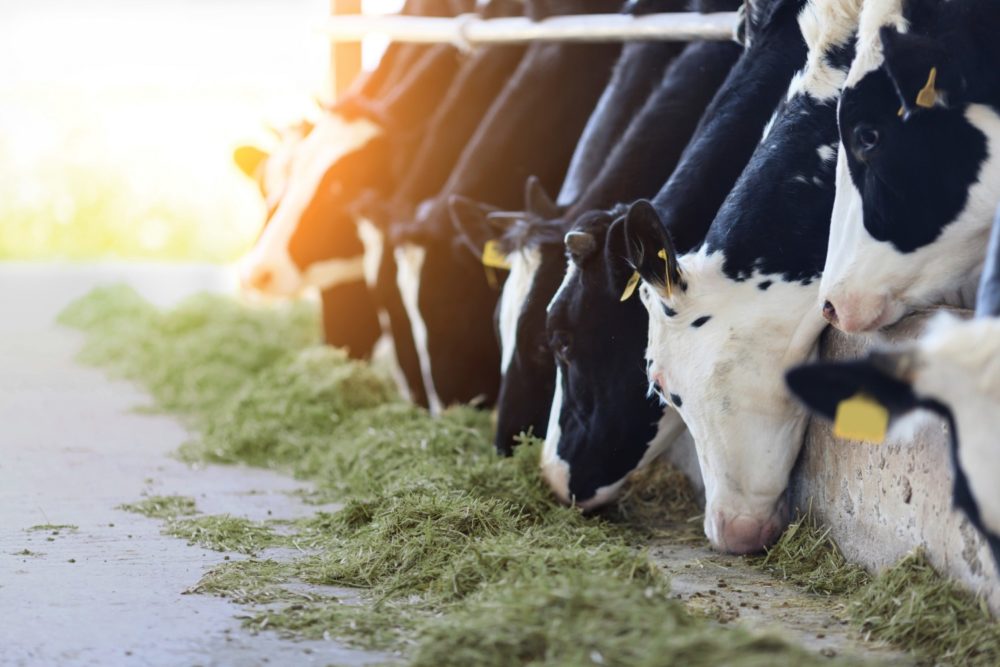
“When we wrap it with plastic and exclude the oxygen, the plant respires a little bit and uses up the oxygen in the bale. Once it’s anaerobic, or lacking oxygen, the lactic acid producing bacteria grow within that baleage. They turn starch and sugars into lactic acid,” Undersander explained.
This acid helps preservation for long term feed out. Remember bacteria don’t change the quality of the baleage, but allow for more preservation and flexibility of feeding at a later date.
When baling under 50 percent, the bale will be preserved. This is because it is anaerobic, or without oxygen, and the bacteria won’t be able to grow. Dr. Undersander doesn’t recommend wrapping below 25 percent without a netwrap bale because the stems often get brittle and tear the plastic.
More palatable: Few things are as frustrating to livestock owners as seeing hay left in the feeder that cattle refuse to eat.
“Cattle don’t like to eat brittle stems,” Undersander said. “Because [baleage] is a little bit softer, we don’t have the bunk refusal of as many of the stems. In bales that are over 50 percent moisture, we see acid formation, which aids in the process of softening
the stems.”
In the end, quality wins: Baleage gives you a convenient, stress-free way to provide quality feedstuff to your animals. Not only are you saving yield but also maximizing your acres to put up quality hay at the right time.
Cost vs. Benefits
A concern many producers have with making baleage is the added equipment and material costs. Based on data collected on swathed alfalfa by Dr. Undersander, the extra cost required to bale high-moisture forage could easily be offset by the reduced hay losses during harvesting, storage and feeding.
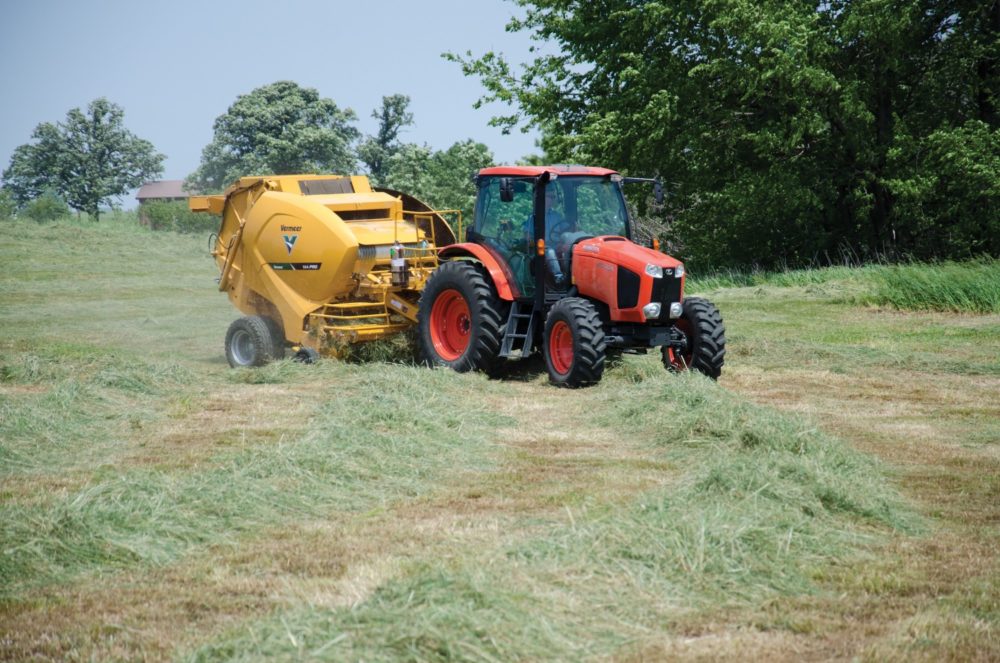
When looking for the appropriate baler to fit your baleage needs, Vermeer Product Manager Josh Vrieze recommends a machine that can handle the demands of heavy, wet material and produce high quality bales in a variety of materials.
“You will need a baler that’s specially designed for high-moisture forage production,” said Vrieze. “A robust pickup assembly and heavy-duty tines, as well as a precutter knife system, will have a huge impact on performance, feeding and increased palatability when you feed baleage to your livestock.”
New high moisture balers often feature knives to precut the forage, and Undersander confirmed the advantages of chopped baleage.
“Data would indicate it is very beneficial both to the person making the bales and particularly to the person feeding the bales. What we see if we precut the forage prior to baling is that we can make a denser bale,” Undersander said.
Denser bales require less plastic film because the same amount of forage goes into a fewer number of bales. This translates into savings in purchasing packaging material. Producers will also save in transportation costs by minimizing the number of trips from the field to the storage location. Furthermore, with fewer bales, producers save space in their sheds or storage locations. During storage, denser bales typically hold their form better and stay in a rounder shape.
The ultimate advantage of baling precut forage, both in dairy and beef applications, comes when feeding the baleage to livestock. To a dairy producer, the hay in baleage breaks apart a lot easier when put into a total mixed ration (TMR), allowing for less strain on the mixer and a more uniform ration. For a beef rancher, precutting the bale can lead to feed efficiency.
A study by Penn State University revealed that when an animal eats forage cut at a four-inch length, compared to uncut forage, producers see close to a 10 percent increase in efficiency. There are two reasons for this. First, when the cattle are eating from a bunk or bale ring, they waste less forage when cut into four inch pieces. If the forage is not cut, the animal may take a bite, step back while chewing, and lose the extra hay on either side of its mouth.
“The other advantage we see,” Undersander said, “is that because the animal is taking in four inch bites and spends less time chewing, the animal chooses to consume more, and that increase in consumption leads to improved animal performance. With the high price of beef cattle, if we can put 10 percent more gain on those animals, that is worth quite a bit to the producer.”
Read More:


